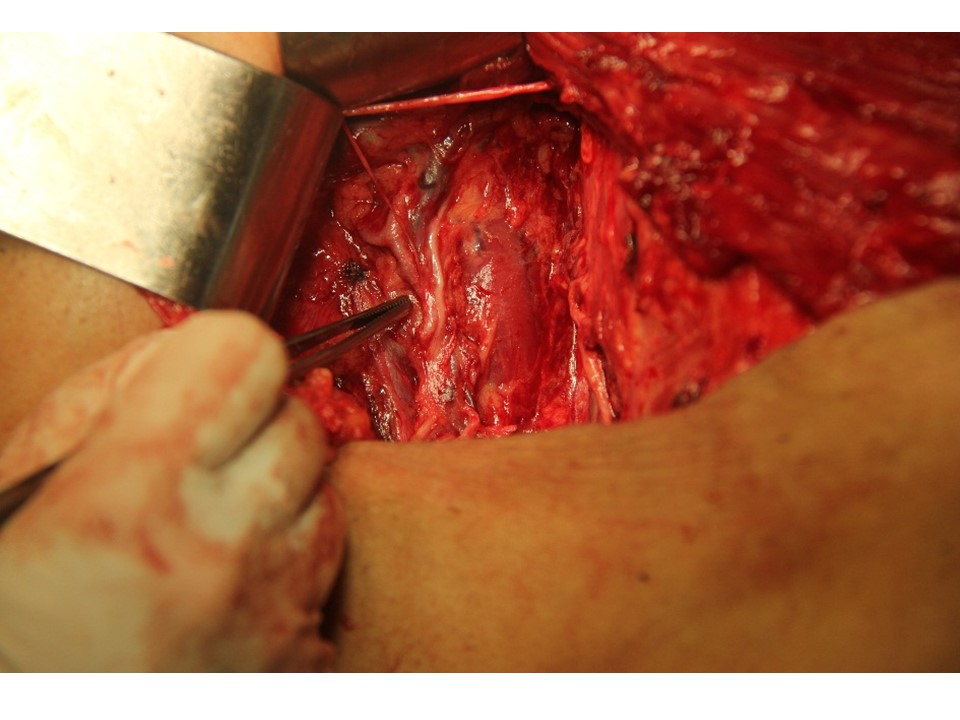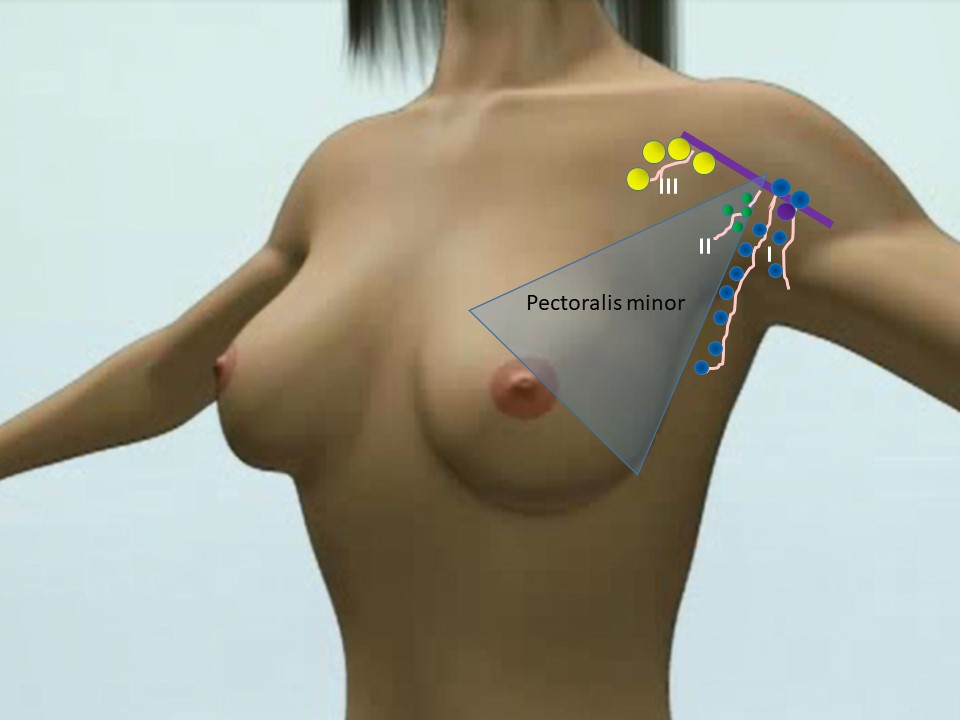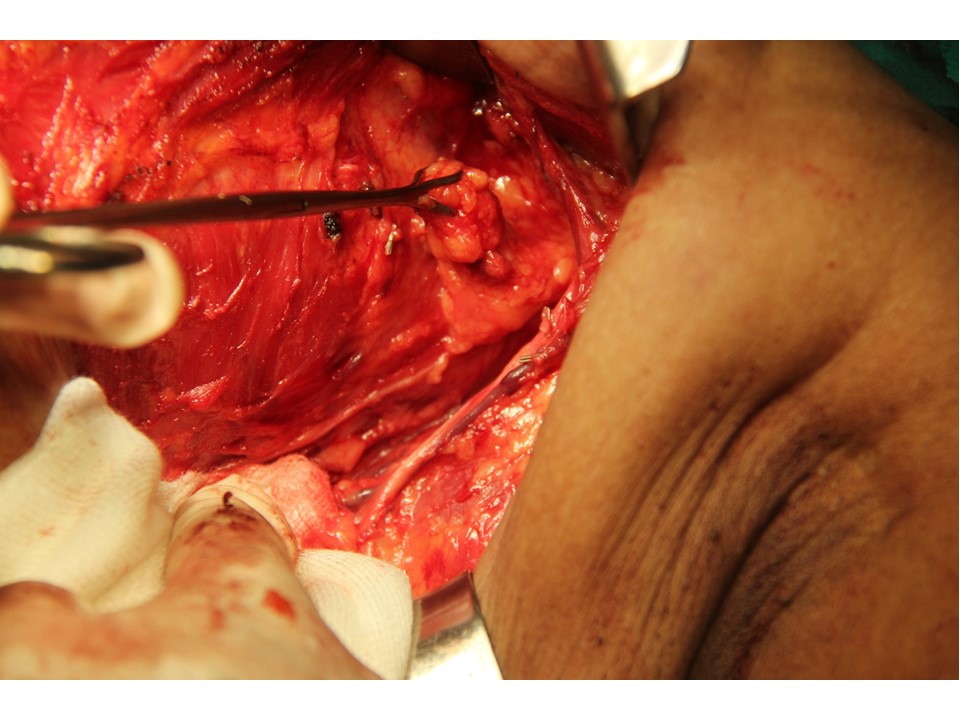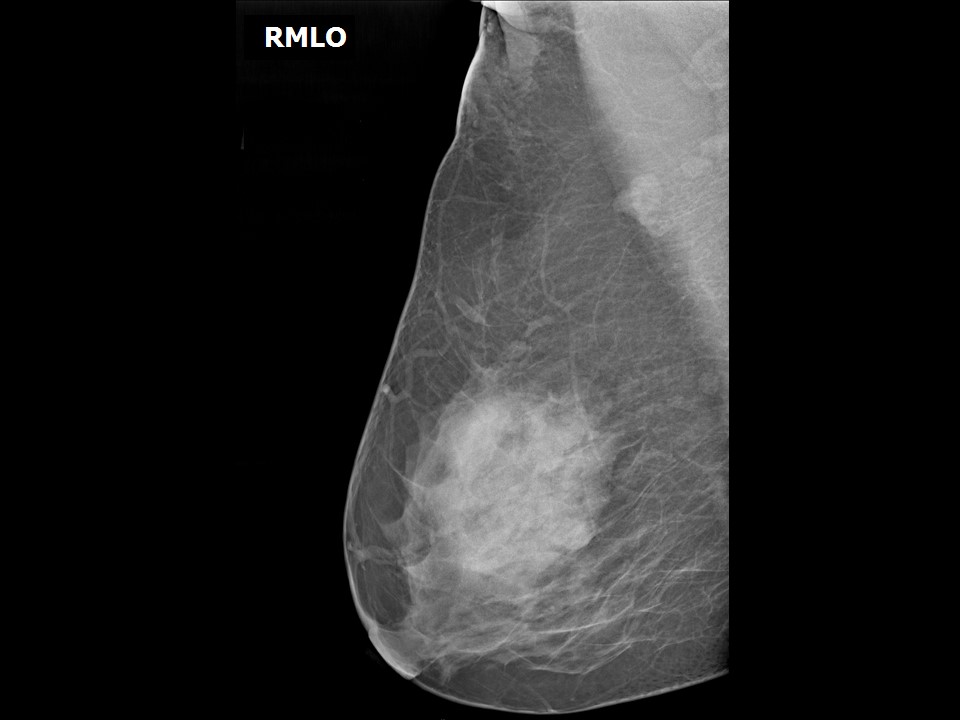The breast is supplied by the internal mammary (or thoracic) artery, the intercostal arteries, and the axillary artery, which gives rise to the external mammary or lateral thoracic artery. The veins form a ring around the base of the nipple (circulus venosus). The large veins pass from the circulus venosus to the circumference of the mammary gland and drain into the external mammary vein and then to the axillary vein. Some of the venous channels also drain the internal mammary (thoracic) vein to the subclavian vein.
Intraoperative image of axilla
The lymphatic drainage of the breast originates from the breast lobules and flows into a subareolar plexus (Sappey plexus). From this plexus, the lymph drains through three main routes:
- Axillary or lateral pathway (75% of the lymphatic drainage): The lymph channels extend along the inferior edge of the pectoralis major to reach the pectoral group of the axillary nodes. The lymphatics further drain to the central and apical axillary nodes and finally to the deep cervical and the subclavian nodes.
- Internal mammary pathway: The lymphatics originate from both the lateral and medial halves of the breast and pass through the pectoralis major to drain to the parasternal nodes.
- Retromammary pathway: The lymphatic drainage comes from the posterior portion of the breast. The lymphatics may reach the sheath of the rectus abdominis and the subperitoneal and subhepatic plexuses.
The lymphatic drainage system of the breast is of great clinical importance because the cancer cells from a breast cancer will spread along these pathways.
Axillary nodes
Axillary lymph nodes are categorized into:
- Level I – nodes situated lateral to the lateral margin of the pectoralis minor
- Level II – nodes situated below the pectoralis minor muscle
- Level III – nodes situated medial and superior to the pectoralis minor muscle up to the clavicle.
|
|   |
| .png)








